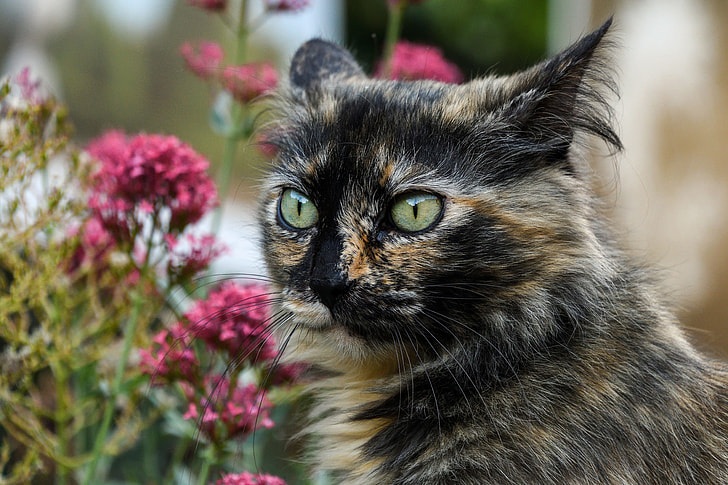Tortoiseshell cats, often referred to as “torties,” are celebrated for their stunning and unique coat patterns. Their striking blend of colors, ranging from rich blacks and oranges to warm browns, make them a favorite among cat enthusiasts. If you’re considering adding a tortoiseshell cat to your family, choosing the right one involves more than just appreciating their beautiful appearance. In this guide, we’ll explore key considerations for selecting the perfect tortoiseshell cat for sale for your home and ensure a smooth transition into your life.
Understanding Tortoiseshell Cats
Characteristics and Traits
Tortoiseshell cats are not a specific breed but rather a color pattern seen in various breeds. Their coat is a mosaic of black, orange, and sometimes white, creating a vibrant and distinctive appearance. Tortoiseshell cats are known for their spirited and often independent personalities. They are often described as having a “tortitude,” a term used to describe their strong-willed and sometimes feisty nature.
Common Breeds with Tortoiseshell Coats
- Domestic Shorthair: The most common type of tortoiseshell cat, these are mixed-breed cats with short fur.
- Maine Coon: Known for their large size and friendly temperament, Maine Coon kittens for sale can also have tortoiseshell patterns.
- Siamese: Siamese cats with tortoiseshell patterns are known as “Tortie Siamese” and have a striking appearance.
Factors to Consider When Choosing a Tortoiseshell Cat
1. Determine Your Preferences
Before searching for a tortoiseshell cat, consider your preferences and lifestyle. Think about the following:
- Activity Level: Are you looking for a playful and active cat or a more laid-back companion?
- Interaction Level: Do you want a cat that enjoys cuddling and interaction or one that is more independent?
- Space: Consider the space available in your home. Larger breeds like Maine Coons need more room to roam.
2. Evaluate the Cat’s Health
When choosing a tortoiseshell cat, ensure you’re adopting or buying from a reputable source that prioritizes the health and well-being of their animals.
- Health Records: Request the cat’s health records, including vaccinations, deworming, and any recent vet check-ups.
- Genetic Testing: Some breeds may be prone to specific health conditions. Inquire about any genetic testing done, especially for breeds known to have hereditary issues.
- Physical Examination: Check for signs of health issues such as clear eyes, a clean coat, and good body condition. Avoid cats that seem lethargic or have noticeable health problems.
3. Consider Age and Personality
Decide whether you want a kitten or an adult cat. Each has its benefits:
- Kittens: While adorable and full of energy, kittens require significant time and effort for training and socialization. They are also more prone to unpredictable behavior.
- Adult Cats: They are often already socialized and have established personalities. Adult cats may also have less energy than kittens, making them suitable for various lifestyles.
4. Research Breeders and Rescues
Finding a reputable source is crucial when purchasing a tortoiseshell cat. Here are some tips for researching breeders and rescues:
- Reputable Breeders: Look for breeders who are members of recognized cat breed organizations such as The International Cat Association (TICA) or The Cat Fanciers’ Association (CFA). They should provide information about the cat’s lineage, health records, and breeding practices.
- Cat Rescues and Shelters: Consider adopting from local shelters or rescues. Many tortoiseshell cats are in need of loving homes. Rescues often provide health screenings and can offer insight into the cat’s temperament and behavior.
- Online Reviews and Recommendations: Read reviews and seek recommendations from other cat owners or veterinarians to find trusted breeders or rescues.
5. Prepare Your Home
Before bringing your new tortoiseshell cat home, ensure your environment is ready for their arrival:
- Safe Space: Create a designated space where the cat can acclimate to its new surroundings. Include a cozy bed, litter box, and food and water bowls.
- Cat-Proofing: Remove potential hazards such as toxic plants, small objects that can be swallowed, and accessible cords or wires.
- Toys and Enrichment: Provide toys and scratching posts to keep your cat entertained and mentally stimulated.
Transitioning Your New Cat
1. Introduce Gradually
When introducing your new tortoiseshell cat to your home, take it slow to minimize stress:
- Initial Isolation: Allow your cat to explore a single room initially, gradually introducing it to other areas of the house.
- Supervised Interactions: If you have other pets, supervise their interactions with the new cat to ensure a smooth introduction.
2. Establish a Routine
Cats thrive on routine. Establish a consistent feeding schedule, regular playtime, and a designated place for the litter box to help your cat feel secure.
3. Regular Vet Visits
Schedule a vet check-up soon after bringing your cat home. Regular visits will help monitor your cat’s health and address any concerns early on.
Conclusion
Investing in a tortoiseshell cat is a rewarding experience, but choosing the right one involves careful consideration and preparation. By understanding the characteristics of tortoiseshell cats, evaluating health and personality, researching reputable sources, and preparing your home, you can ensure a successful and fulfilling adoption or purchase. Whether you choose a playful kitten or a seasoned adult, a tortoiseshell cat can bring beauty, personality, and joy to your home, making it a cherished member of your family
